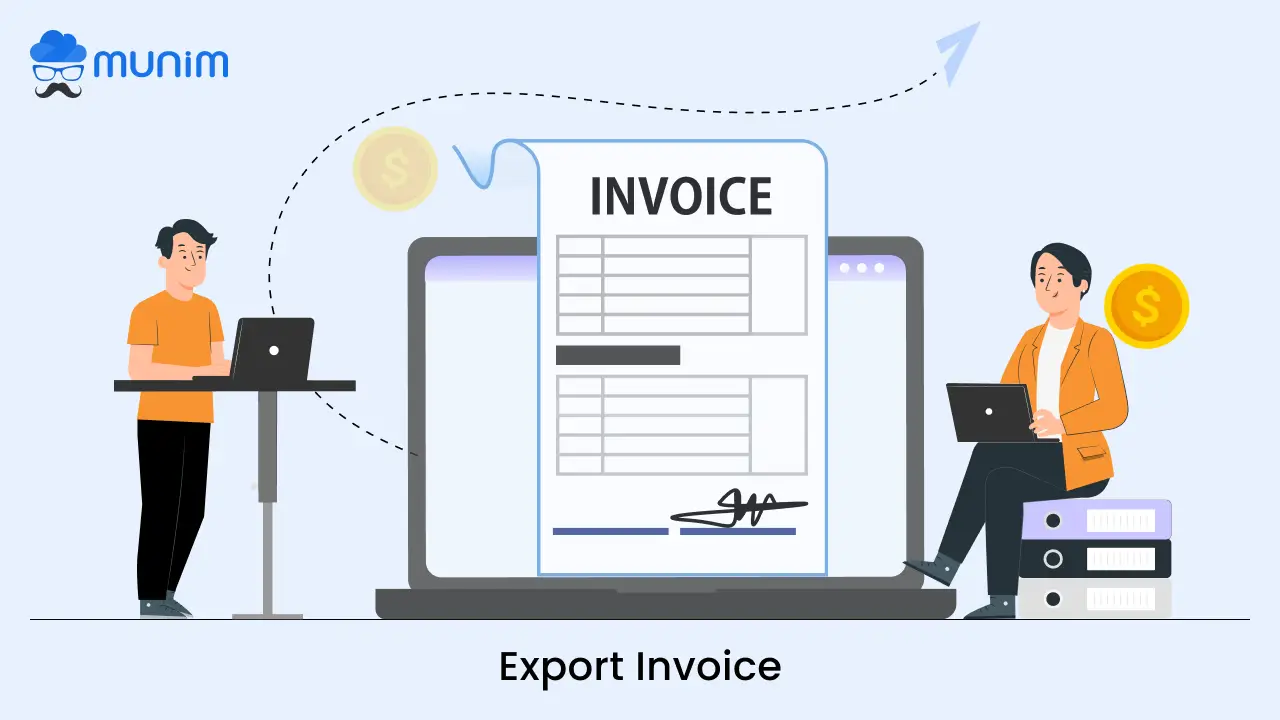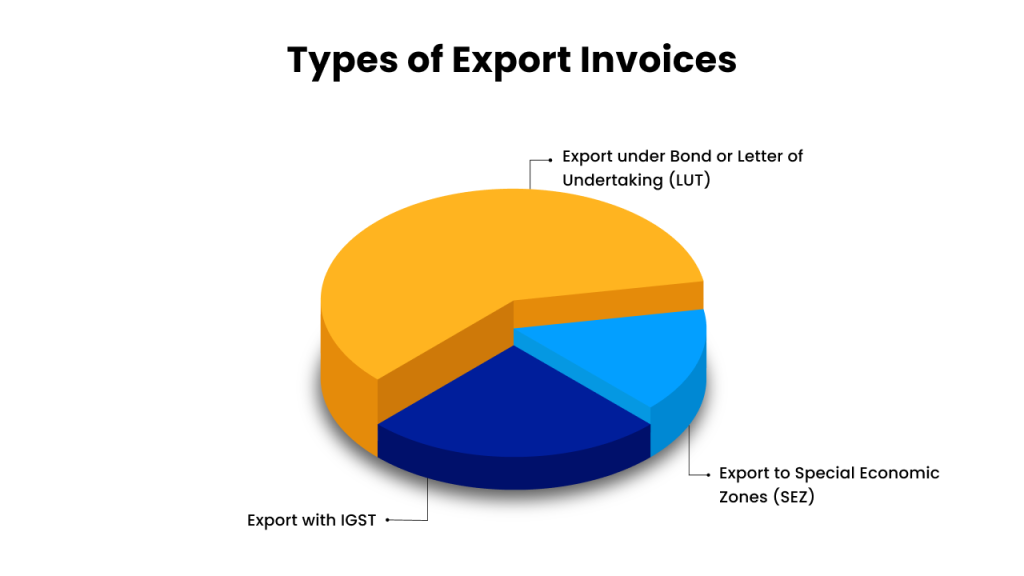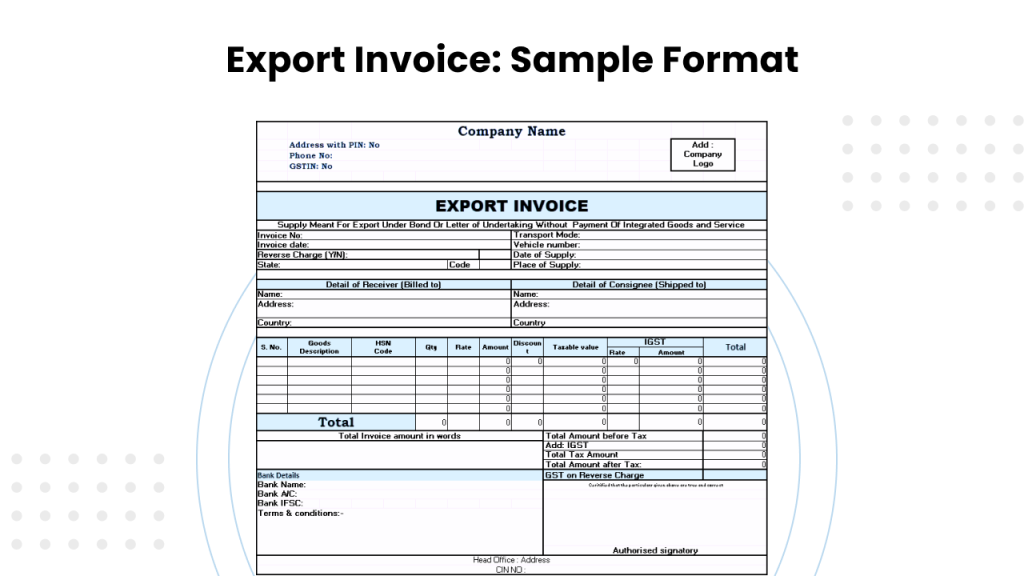Everything You Need to Know About Export Invoices: A Detailed Guide

Exporting goods or services involves a complex process, and understanding export invoices is crucial for businesses engaged in international trade. This article aims to simplify the concept of export invoices, covering key aspects such as what export invoices are, who needs them, their significance, types, legal regulations, and more.
What is an Export Invoice?
An export invoice is a document that describes the goods or services provided by an exporter and the amount due from the importer. It serves as proof of a transaction and includes essential details like seller and buyer information, product or service descriptions, taxes, and more.
What is the Need for Export Invoice?
Export bills go beyond legal compliance, playing vital roles in customs processes, insurance claims, accurate taxation, and seeking regulatory assistance in financial challenges.
Beyond meeting legal requirements, export invoices are essential for:
1. Customs Clearance: Export invoices guide customs authorities, ensuring smooth clearance by providing necessary details about the exported goods.
2. Insurance Claims: In case of lost or damaged goods, export invoices act as crucial documentation to support insurance claims.
3. Governmental Assessment: Authorities use export invoices to calculate accurate taxes and duties, promoting transparency in international trade.
4. Payment Repatriation: Export bills serve as documents for RBI guidance when exporters face challenges in repatriating payments.
When Should You Raise an Export Invoice?
Navigating the timelines according to the Central Goods and Services Tax Act, 2017:
- When the supply involves the movement of goods: The invoice should be issued before or at the time of removal of the goods for delivery.
- When the supply involves the provision of services: The invoice should be issued before the time of service supply or within a specified time (60 days) after the provision of services.
- For goods sent for sale on an approval basis: The invoice is issued at the earliest of the following two cases:
- If approval is received within 6 months, the invoice date is the approval date.
- If approval is not received within 6 months and the buyer hasn’t intimated refusal, the invoice date is the expiry of the 6 months.
Types of Export Invoices

Diving into the intricacies of various export types is crucial for exporters navigating the international trade landscape:
1. Export under Bond or Letter of Undertaking:
Goods or services are exported without the immediate payment of Integrated Goods and Service Tax (IGST).
Documentation: Exporters opting for this method must furnish a Bond or a Letter of Undertaking (LUT).
2. Export with IGST:
In this category, exporters pay the applicable IGST at the time of export.
Refund Mechanism: The exporter retains the option to claim a refund on both the unutilized Input Tax Credit (ITC) and the IGST paid on the exported goods and services.
3. Export to Special Economic Zones (SEZ):
Certain regions designated as Special Economic Zones (SEZs) enjoy zero-rated supplies, meaning no taxes are levied on the exported goods and services.
Benefits and Incentives: The supply of goods and services to SEZs comes with benefits and incentives similar to regular exports.
Legal Regulations for Export Invoices
Exploring the legal landscape under India’s Goods and Services Tax (GST) law reveals three distinct categories of exports, each subject to specific regulations:
1. Export under Bond or Letter of Undertaking (LUT):
Tax Payment: No tax payment or refund is required in this category.
Mandatory Documentation: Exporters choosing this method must furnish a Bond or a Letter of Undertaking (LUT).
2. Export with IGST:
Tax Payment: Exporters under this category are obligated to pay the applicable IGST on exported goods.
Refund Mechanism: The exporter retains the option to claim a refund on both the unutilized Input Tax Credit (ITC) and the IGST paid on the exported goods and services.
3. Export to Special Economic Zones (SEZ):
Tax Payment: Special Economic Zones are treated as zero-rated supplies, meaning no taxes are levied on the export.
Benefits and Incentives: The supply of goods and services to SEZs enjoys the same benefits and incentives as regular exports.
Understanding these legal nuances is pivotal for businesses engaged in international trade. Complying with GST regulations ensures seamless operations and helps exporters choose the most suitable method based on their financial strategies and business requirements.
Export Bill Format & Elements

Unpacking the details encapsulated in a typical invoice format of export:
- Credentials of the Supplier: In-depth information, including name, address, contact details, and GSTIN.
- Credentials of the Buyer: Comprehensive details of the buyer, encompassing name, address, and contact information.
- GSTIN of Supplier: The unique identification number for taxable persons under the GST Act.
- Details of Goods or Services: Comprehensive information about goods or services, including rates, quantities, and amounts.
- Invoice Date: The date on which the invoice is generated.
- Invoice Number: A unique combination of numbers and alphabets arranged serially.
- Conversion Rate: Reflecting the conversion of Indian rupee into another currency or vice versa.
- Amount: The total value of the invoice, encompassing insurance, freight, and taxes.
- Type of Export: Indicating whether the export involves a bond, a letter of undertaking, is to a Special Economic Zone, or after the payment of IGST.
- Details of Shipping Bill: Information filed with the Customs Officer, specifying the type and value of goods to be exported.
- Signature: A physical or digital sign of the supplier, verifying the transaction’s authorization.
- Notes: Additional notes by the supplier to the importer, if any.
Other Essential Export Invoice Information
Diving into valuable additional details:
- Use of Currency: Flexibility in using foreign currency or Indian Rupees in export invoices.
- Packing and Shipping: Ensuring precise documentation with details like container and seal numbers, shipping marks, and goods description.
- Time Limit for Raising Invoice: Insights into the dependent timelines based on whether it involves goods or services.
Conclusion
In essence, unraveling the intricacies of export invoices is pivotal for companies participating in international trade. This article serves as a guide, emphasizing the legal compliance, customs facilitation, and transactional proof that export invoices provide. Ready to simplify your tax invoicing process? Explore Munim Accounting & Billing Software today at just Rs 1999/year!
FAQs
1. Can an export invoice be cancelled?
Yes, similar to any other invoice, an export invoice can be cancelled.
2. Is e-invoicing mandatory for exports?
No, e-invoicing is not mandatory for everyone. Specific criteria, such as an aggregated turnover of more than Rs. 50 crores, determines the e-invoicing mandate.
3. Can export invoices be in Indian rupees?
Yes, there is no mandatory requirement specifying that export invoices must be issued in foreign currency.
4. What is the letter of undertaking?
A letter of undertaking is a self-declaration from the exporter, affirming compliance with GST Act requirements while exporting without paying IGST.






